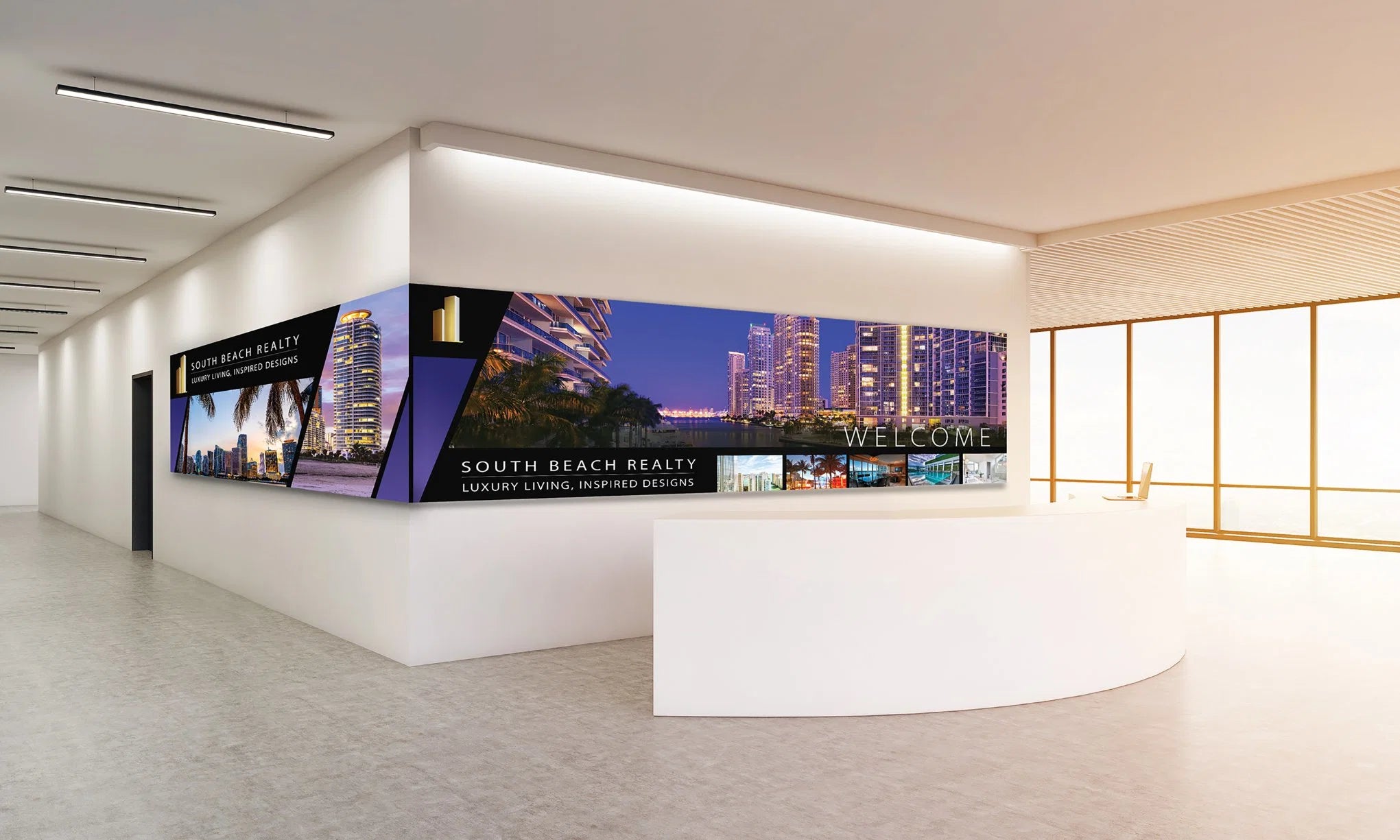How to Plan and Build the Optimal Videowall for your Organization
The world of videowalls has evolved dramatically in recent years. Many of the traditional constraints - like overcoming ambient daylight's glare and fitting displays into a room or building's shape - are disappearing or already gone. The possibilities are now endless, but successful videowall projects aren't just about fitting the technology into a space. Getting the desired return through big LCD and LED videowalls requires strategy, careful design, planning, and execution.
This guide explores the use-cases for big videowalls, the evolving technologies, the challenges and how to overcome them, how to plan and succeed, and where this technology is heading.
Two Ways To Build A Wall
The two most commonly used technologies for creating videowalls are LCD and LED - two very different technologies that sometimes get confused.
LCD Videowalls
- Deliver high definition visuals up to 4K ultra HD
- Look great from any distance and usually from wide viewing angles
- Can easily introduce touch interactivity
- Arranged in various configurations (e.g., 2x2, 3x6)
- Bezels (frames around edges) have grown steadily thinner over the years
- More budget-friendly option
- Can create inventive new shapes and patterns

Featured LCD Solution: Samsung VM46B-U 46" Video Wall Display
Experience the next generation of LCD video walls with the Samsung VM46B-U. With its ultra-narrow 3.5mm bezel and superior IPS panel, it's perfect for corporate environments and retail spaces where image quality is paramount.
LED Videowalls
- Use direct-view LEDs, where viewers look directly at tiny LEDs creating visuals
- Measured by pixel pitch (distance between LED clusters)
- New generation of fine pixel pitch indoor LEDs have gaps as fine as 1mm or less
- No visible seams between LED tiles
- Best for large, spectacular canvases
- Viewing distance rule: 1mm pixel pitch = 10 feet optimal viewing distance

Featured LED Solution: Planar UC LED Video Wall
Transform your space with the Planar UC LED Video Wall. With sizes up to 207" and pixel pitches as fine as 0.9mm, it's the perfect solution for creating immersive experiences in executive boardrooms and high-end installations.
Videowalls In Use
Videowalls are used in various settings, including:
- Retail: Feature walls, backdrops at cash/customer service areas, architectural features
- Hospitality: Design features at reception, interactive digital concierges, ambient art walls
- Mass Transport: Communication with travelers at check-in counters and on concourses

High-Performance Solution: Samsung VH55B-E 55" Video Wall Display
For high-traffic areas with varying ambient light conditions, the Samsung VH55B-E delivers exceptional performance with 700 nits brightness and 24/7 operation capability, making it ideal for lobbies, retail environments, and control rooms.
Fit to Purpose
When choosing between LCD and LED, consider:
- Budget
- Shape requirements
- Lighting conditions
- Viewing distance
- Content needs
- Physical constraints (installation and servicing)
Planning Your Project
Success traces back to initial planning meetings. Key questions to ask:
- What is the videowall intended to do?
- What communications problem or opportunity is it addressing?
- Who is the target audience?
- Is the targeted location appropriate and optimal?
- How will programming be refreshed, and who owns that budget?
The Right Wall for You
Components to consider:
- Displays: Choose between LCD or LED based on needs and objectives
- Mounting: Use professional mounts for secure installation and alignment
- Software: Select based on the complexity of your programming model
- Playback hardware: Options include PCs with multiple graphics cards or dedicated videowall processors
Other factors to consider:
- Content resolution
- Weight and floor support
- Energy consumption
- Safety and secure installation
- Tamper-proofing, especially for LED modules
Bottom Line
While a big videowall may look like a very large TV, there's a lot involved from concept to execution. It's easy to make mistakes at every stage. The best approach is to work with experienced partners who can help you:
- Define objectives and strategy
- Determine capital and operating budgets
- Identify experienced systems integrators for project delivery
Get a videowall project right, and you'll have a compelling digital canvas that powerfully drives and delivers on your objectives, whatever they may be.
Not Sure Which Video Wall is Right For You?
We understand every organization has unique display requirements. Whether for a corporate lobby, control room, or retail space, contact us for a personalized consultation or quote or call us at (800) 992-5279.







